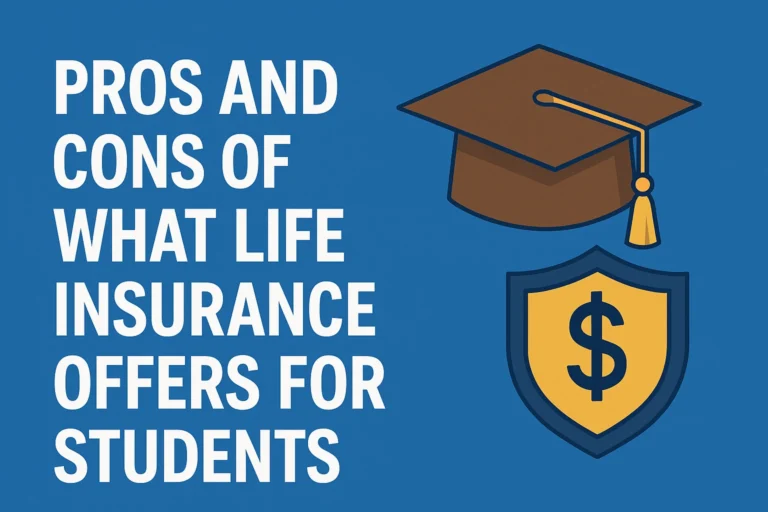Starting college is an exciting step into adulthood. You’re gaining independence, meeting new people, and shaping your future. But with this independence comes responsibility — including taking care of your health.
One of the most important but often overlooked aspects of student life is health insurance. This guide will walk you through why it’s necessary, what your options are, and how to choose the best plan for your needs as a student.
What Is Health Insurance and Why It Matters in College
Health insurance is a contract between you and an insurance provider that helps pay for medical expenses like doctor visits, hospital stays, medications, and preventive care. While you might feel healthy and invincible in college, unexpected medical issues or accidents can happen at any time.
Without insurance, even a short hospital stay can result in thousands of dollars in bills. Health insurance acts as a safety net, protecting you financially and giving you access to timely medical care when you need it most.
Many universities in the U.S. require students to have proof of insurance. Some offer their own student health plans, while others expect you to find your own coverage. It’s essential to understand your options early to avoid gaps in protection.
Beyond financial protection, health insurance gives you access to preventive care — such as vaccinations, check-ups, and mental health services — which are vital during the stress of academic life. These services can help you stay healthy and succeed in school.
Whether you’re a domestic or international student, undergraduate or graduate, having the right coverage ensures peace of mind throughout your college journey.
Step-by-Step: How to Choose Health Insurance as a Student
Step 1: Check If You’re Covered Under a Parent’s Plan
Under the Affordable Care Act, young adults can stay on their parent’s health plan until the age of 26. If your parents have employer-sponsored or private insurance, you may already be covered. Confirm that the plan covers care in your college’s location.
Step 2: Understand University-Sponsored Plans
Many colleges offer student health insurance plans that are often affordable and tailored for student needs. These plans usually include coverage for campus health services and local providers.
Step 3: Evaluate Medicaid or State-Based Programs
If your income is low, you may qualify for Medicaid or a subsidized plan under the Health Insurance Marketplace. Eligibility depends on your state and household income.
Step 4: Compare Private Insurance Plans
You can buy health insurance independently through the Marketplace or private insurers. Be sure to compare coverage, deductibles, premiums, and in-network providers before purchasing.
Step 5: Check International Student Options
If you’re studying in the U.S. from abroad, your university may require special international student insurance. Providers like ISO Student Health or IMG Global offer plans tailored for this need.
Comparison Tables: Student Health Insurance Options
| Plan Type | Typical Monthly Cost | Coverage Area | Best For |
|---|---|---|---|
| Parent’s Plan | $0 (already included) | Depends on provider | Students under 26 with family coverage |
| University Plan | $100 – $300 | Local and campus services | On-campus students |
| Marketplace Plan | $0 – $350 (after subsidies) | Nationwide | Students not eligible for other plans |
| International Student Plan | $50 – $150 | U.S. and global coverage | International students |
| Feature | Why It Matters |
|---|---|
| Monthly Premium | Regular cost you pay for the plan |
| Deductible | Amount you pay before coverage starts |
| Out-of-Pocket Maximum | Financial cap on your yearly spending |
| In-Network Providers | Doctors and hospitals that are covered |
| Prescription Coverage | Access to affordable medications |
Common Mistakes Students Make and How to Avoid Them
Overlooking Local Coverage
Many students assume their parent’s plan covers them everywhere. But some plans have limited networks. Always check if local clinics and hospitals near your campus are in-network.
Not Comparing Plan Details
Focusing only on monthly premiums can be misleading. A low premium might come with high deductibles and limited coverage. Review the full benefits of each plan.
Missing Enrollment Deadlines
Each plan has specific enrollment periods. If you miss them, you may remain uninsured. Mark important dates on your calendar to stay on track.
Ignoring Mental Health Coverage
Mental health services are vital in college, yet students often overlook them when selecting a plan. Ensure your plan includes counseling, therapy, or telehealth options.
Assuming Campus Health Is Enough
Student health centers may offer only basic care and may not handle emergencies or specialist needs. Full insurance ensures you’re covered beyond campus walls.
Frequently Asked Questions
Do I need health insurance if I’m young and healthy?
Yes. Even if you rarely visit a doctor, accidents and illnesses are unpredictable. Health insurance protects you financially and provides access to preventive services.
What happens if I don’t have health insurance in college?
Without insurance, you may be responsible for all medical costs. Some colleges also place a hold on your enrollment or add fees if you fail to show proof of insurance.
Is university health insurance better than private plans?
It depends on your situation. University plans are often affordable and convenient, but private plans may offer broader coverage. Use comparison tables to decide.
Conclusion and Takeaway: Secure Your Health Now
Starting college is a major life transition — and managing your health is a key part of that. With so many options for health insurance for college students, you have the power to protect your future and your finances.
Don’t wait for a medical emergency to realize its importance. Explore your options, compare plans, and choose the one that fits your needs.
Your health is your most valuable asset — insure it wisely.
Learn more about student car insurance tips and how international students can get medical coverage.






